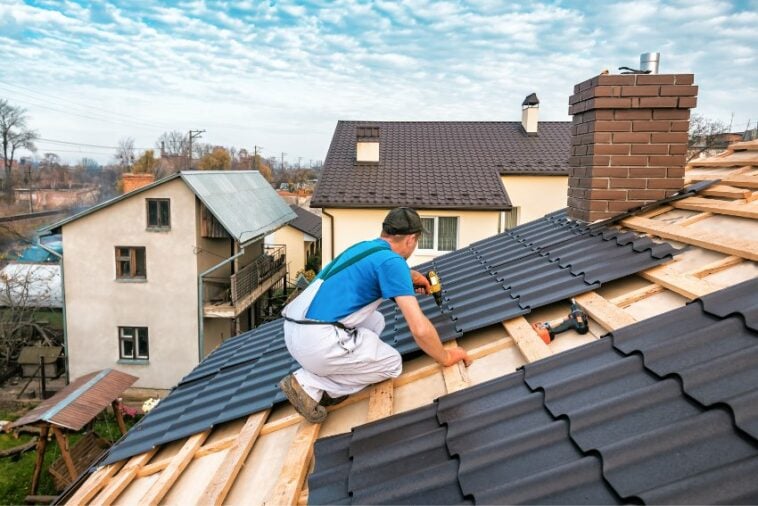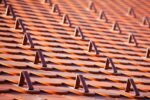This Post may contain Affiliate Links. Please read our Disclosure for legal jargon.
Sheet metal roofing is a popular and versatile choice for both residential and commercial applications. It offers durability, energy efficiency, and a myriad of design options. In this comprehensive guide, we will introduce you to the different types of sheet metal roofing profiles and materials, allowing you to make an informed decision when selecting the ideal roofing solution for your project.
Outline
9 Most Popular Types of Sheet Metal Roofing
1. Corrugated Roofing
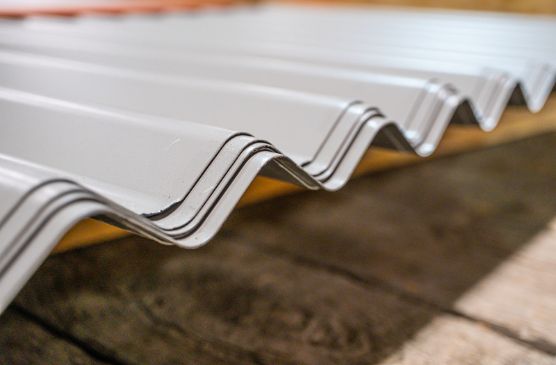
Corrugated roofing is characterized by its sinusoidal wave-like pattern, which provides structural rigidity and strength. It is known for its resilience in the face of inclement weather and longevity.
Corrugated roofing is cost-effective, lightweight, and easy to install. Its wavy design facilitates efficient water runoff, reducing the risk of leaks and water damage.
Galvanized steel, aluminum, and stainless steel are common materials used for corrugated roofing.
2. Standing Seam Roofing
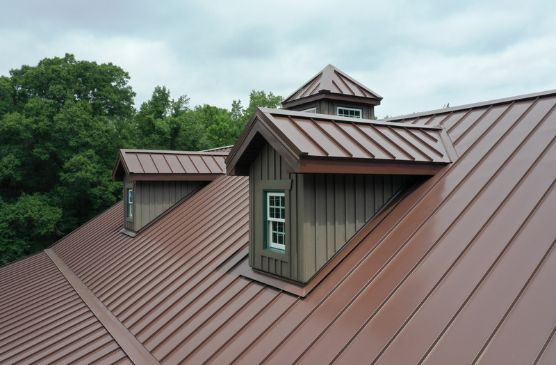
Standing seam roofing consists of vertically aligned metal panels with raised seams interlocked to create a continuous, watertight barrier. It is renowned for its sleek, modern appearance and exceptional performance.
These systems offer superior weather resistance, minimal maintenance requirements, and a broad range of material and color options. Additionally, they are energy efficient and can accommodate solar panel installations.
Galvalume-coated steel, aluminum, copper, and zinc are popular choices for standing seam roofing.
3. R-Panel Roofing
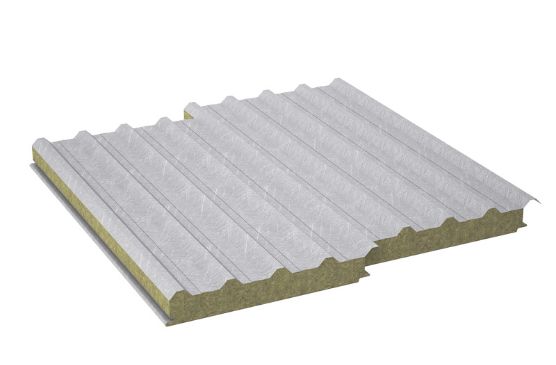
R-Panel roofing features a ribbed design with exposed fasteners, making it an economical and straightforward option for commercial and industrial buildings.
It offers a balance of cost-effectiveness, durability, and ease of installation, making it an appealing choice for budget-conscious projects without compromising quality.
Galvanized steel and aluminum are the primary materials for R-Panel roofing, offering differing levels of strength, weight, and corrosion resistance.
4. AG Panel Roofing
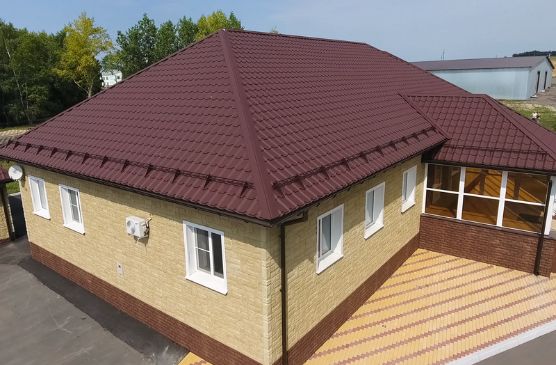
AG Panel roofing, or “agricultural panel” roofing, consists of ribbed metal panels with a lower profile than R-Panel roofing. It is often used for agricultural buildings, sheds, and residential applications.
AG Panel roofing is affordable, versatile, and easy to install. Its low-profile design enables it to blend seamlessly with various architectural styles.
Galvanized steel and aluminum are the most common materials for AG Panel roofing.
5. Box Rib Roofing
Box rib roofing features a series of deep, rectangular ribs that provide structural support and a distinct visual appeal. It is often used for commercial and industrial applications.
Box rib roofing offers increased strength and rigidity compared to other types of sheet metal roofing. It also provides excellent water runoff and is compatible with various insulation options.
Galvanized steel, Galvalume, and aluminum are the primary materials for box rib roofing.
6. Snap-Lock Roofing
Snap-lock roofing is a type of standing seam roofing with concealed fasteners and an interlocking mechanism that “snaps” panels together. This design offers a clean, seamless appearance and a simplified installation process.
Snap-lock roofing provides excellent weather resistance, durability, and a modern, aesthetically pleasing look. Its concealed fastener system reduces the risk of leaks and requires minimal maintenance.
Common materials for snap-lock roofing include Galvalume-coated steel, aluminum, copper, and zinc.
7. Batten Seam Roofing
Batten seam roofing features metal panels that are connected by raised seams, with a separate metal batten covering the seam. This design offers a traditional, classic appearance and enhanced weather resistance.
These roofs offer excellent durability, a timeless appearance, and compatibility with various architectural styles. The raised seams and battens provide additional structural support and enhanced water runoff capabilities.
Galvanized steel, aluminum, copper, and zinc are popular choices for batten seam roofing.
8. Stone Coated Metal Roofs
Stone-coated metal roofs consist of metal panels coated with stone granules, which create a unique, textured appearance. This roofing type offers the durability of metal with the look of traditional roofing materials, such as asphalt shingles or clay tiles.
These roofs provide exceptional weather resistance, energy efficiency, and longevity. The stone coating offers additional protection from UV rays, impacts, and corrosion while reducing noise transmission.
Galvalume-coated steel is the most common material for stone-coated metal roofs.
9. Metal Shingles
Metal shingles are designed to mimic the appearance of traditional shingles, such as wood or slate while providing the strength and durability of metal. They are available in various shapes, sizes, and textures.
These shingles offer a long lifespan, minimal maintenance requirements, and resistance to fire, wind, and impact. They provide an attractive alternative to traditional shingle materials, with enhanced performance and energy efficiency.
Aluminum, steel, copper, and zinc are common materials for metal shingles.
Sheet Metal Roofing Materials
1. Galvanized Steel
Galvanized steel is steel coated with a layer of zinc, providing enhanced corrosion resistance. This material is cost-effective, durable, and widely available.
Galvanized steel is suitable for various roofing profiles, including corrugated, R-Panel, AG Panel, and box rib roofing. It is a popular choice for residential, commercial, and agricultural applications.
2. Galvalume
Galvalume is steel coated with an aluminum-zinc alloy, offering improved corrosion resistance compared to galvanized steel. It is more durable, less prone to rust, and has a longer lifespan.
Galvalume is used for various roofing profiles, such as standing seam, snap-lock, and box rib roofing. It is an excellent choice for projects that require enhanced durability and corrosion resistance.
3. Aluminum
Aluminum is a lightweight, corrosion-resistant material with high reflectivity, making it an energy-efficient roofing option.
It suits various roofing profiles, including standing seam, snap-lock, and batten seam roofing. It is an ideal choice for coastal regions due to its resistance to saltwater corrosion.
4. Copper
Copper is a premium roofing material known for its longevity, corrosion resistance, and striking appearance. Over time, it develops a patina, adding a unique aesthetic appeal to the structure.
Copper is commonly used for standing seam, batten seam, and metal shingle roofing. It is an excellent choice for high-end residential and commercial projects and historical restorations.
5. Zinc
Zinc is a durable, corrosion-resistant metal with a low environmental impact. It’s natural self-healing property allows it to recover from scratches and imperfections over time.
Zinc is primarily used for standing seam and batten seam roofing. It is an attractive choice for eco-conscious projects and modern architectural designs.
6. Stainless Steel
Stainless steel is an alloy containing chromium, which provides exceptional corrosion resistance and strength. It is a low-maintenance, long-lasting material suitable for various environments.
Stainless steel is often used for corrugated and box rib roofing and commercial and industrial applications that require enhanced durability and resistance to harsh conditions.
Selecting the right sheet metal roofing type is crucial for the success and longevity of your project. By considering the various profiles and materials available, you can make an informed decision that meets your needs and preferences.

